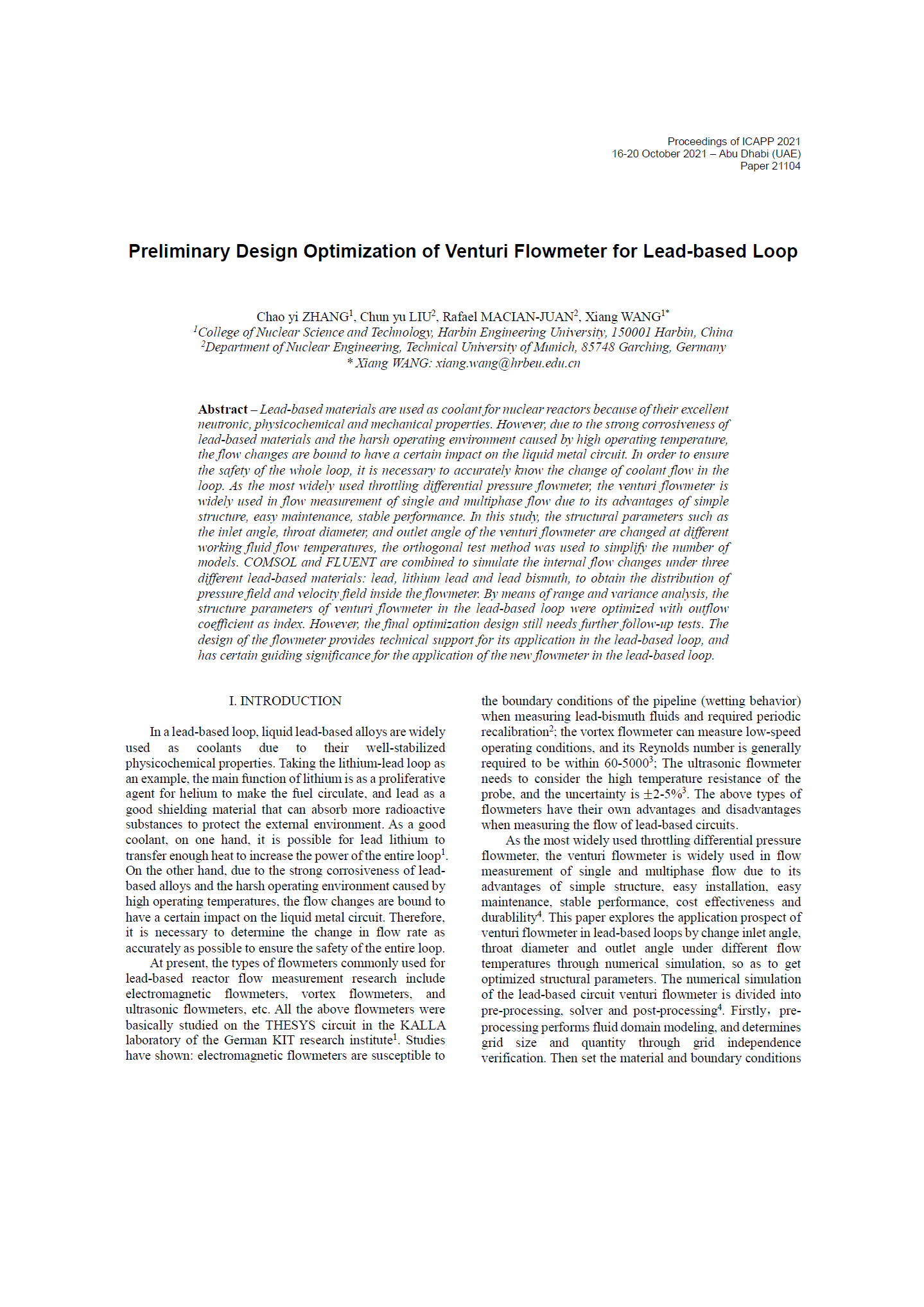Lead-based materials are used as coolant for nuclear reactors because of their excellent neutronic, physicochemical and mechanical properties. However, due to the strong corrosiveness of lead-based materials and the harsh operating environment caused by high operating temperature, the flow changes are bound to have a certain impact on the liquid metal circuit. In order to ensure the safety of the whole loop, it is necessary to accurately know the change of coolant flow in the loop. As the most widely used throttling differential pressure flowmeter, the venturi flowmeter is widely used in flow measurement of single and multiphase flow due to its dvantages of simple structure, easy maintenance, stable performance. In this study, the structural parameters such as the inlet angle, throat diameter, and outlet angle of the venturi flowmeter are changed at different working fluid flow temperatures, the orthogonal test method was used to simplify the number of models. COMSOL and FLUENT are combined to simulate the internal flow changes under three different lead-based materials: lead, lithium lead and lead bismuth, to obtain the distribution of pressure field and velocity field inside the flowmeter. By means of range and variance analysis, the structure parameters of venturi flowmeter in the lead-based loop were optimized with outflow coefficient as index. However, the final optimization design still needs further follow-up tests. The design of the flowmeter provides technical support for its application in the lead-based loop, and has certain guiding significance for the application of the new flowmeter in the lead-based loop.
